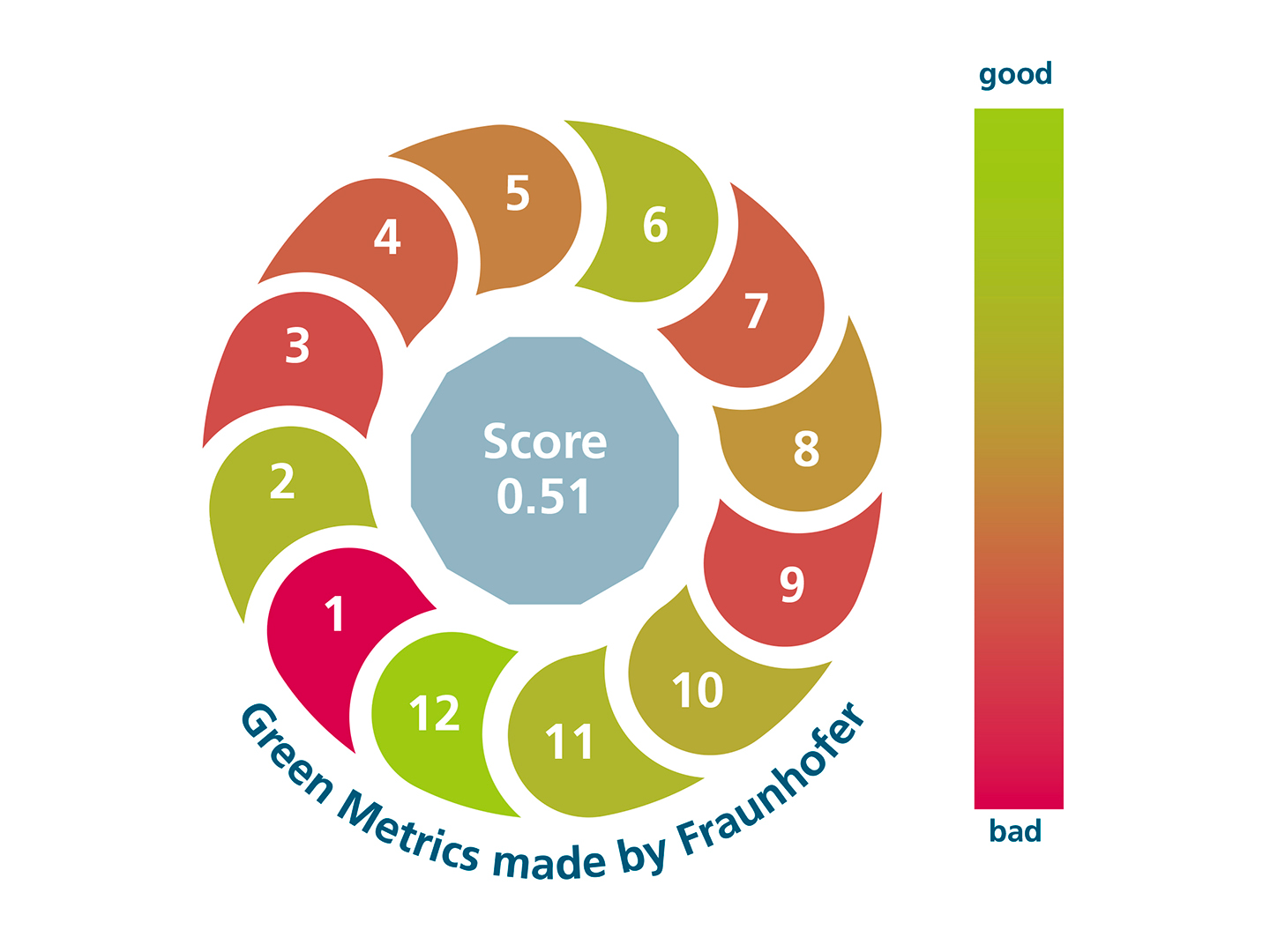The "12 Principles of Green Chemistry" are a framework for developments in the field of green chemistry. The requirements are geared towards both products and their manufacturing processes. They aim to improve the use of resources, improve energy efficiency, and reduce risks to people and the environment. [Kreuder DeVinero-2017]1
As part of the ShaPID project, these 12 principles are being further developed by Fraunhofer for use in green chemistry. Especially the following aspects are taken into account:
- The upstream supply chain for the reaction's educts is categorized based on their cumulative energy demand and carbon footprint and recorded for evaluation.
- Renewable raw materials in the input are categorized more finely and expanded to include recycled raw materials. This means that differences between the raw materials can also be considered in the assessment.
The aim is to use simple and quick calculations to assess the greenness of processes and products regarding various ecologically relevant factors as representatively and objectively as possible. Real phenomena and their significance are mapped with sufficient accuracy. The Fraunhofer Green Metrics are designed to be user-friendly and can be applied without detailed process knowledge.
| 1 A. DeVierno Kreuder, T. House-Knight, J. Whitford, E., Ponnusamy, P. Miller, N. Jesse, R. Rodenborn, S. Sayag, M., Gebel, I. Aped, I. Sharfstein, E. Manaster, I. Ergaz, A. Harris, L., Nelowet Grice, ACS Sustainable Chem. Eng. 2017, 5 (4), 2927–2935. DOI: https://doi.org/10.1021/acssuschemeng.6b02399 |
 Fraunhofer lighthouse project »ShaPID« – Shaping the Future of Green Chemistry by Process Intensification and Digitalization
Fraunhofer lighthouse project »ShaPID« – Shaping the Future of Green Chemistry by Process Intensification and Digitalization
